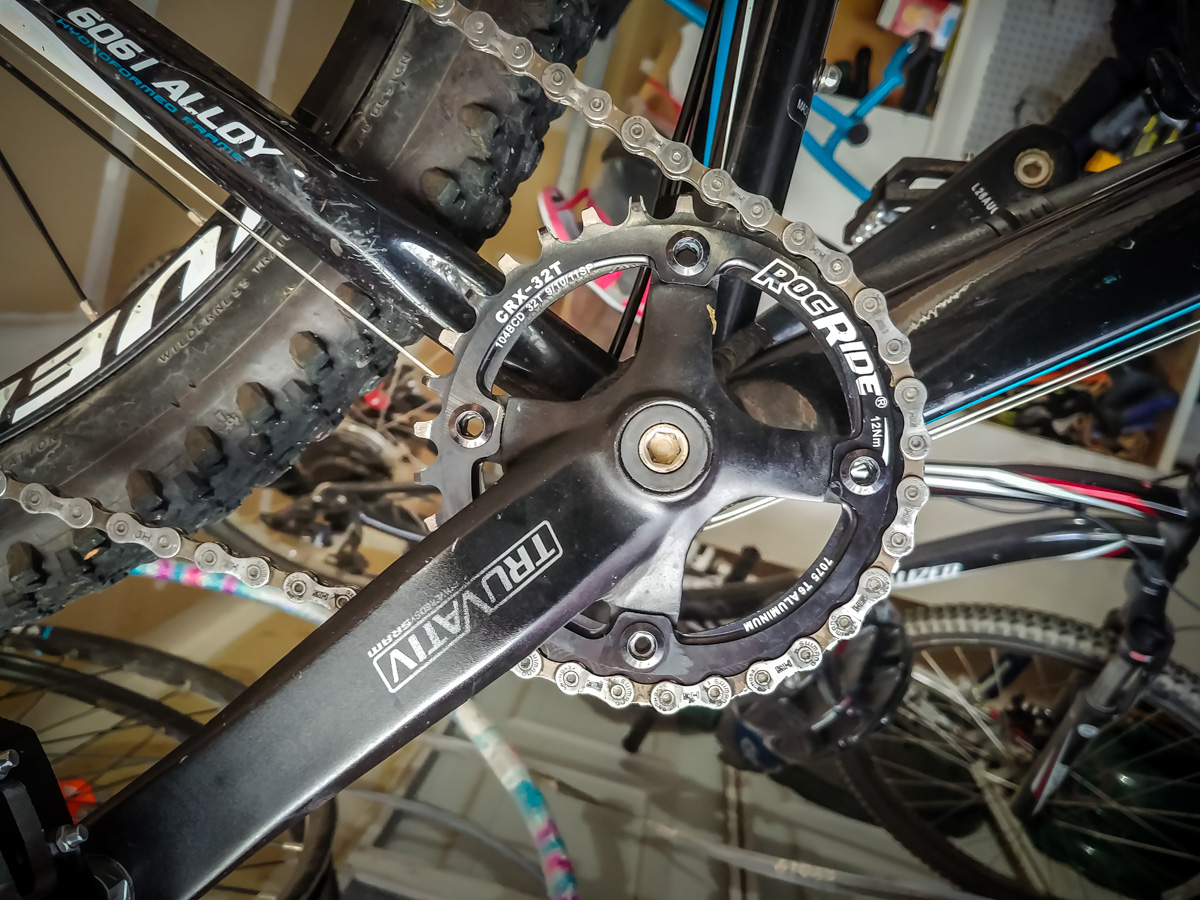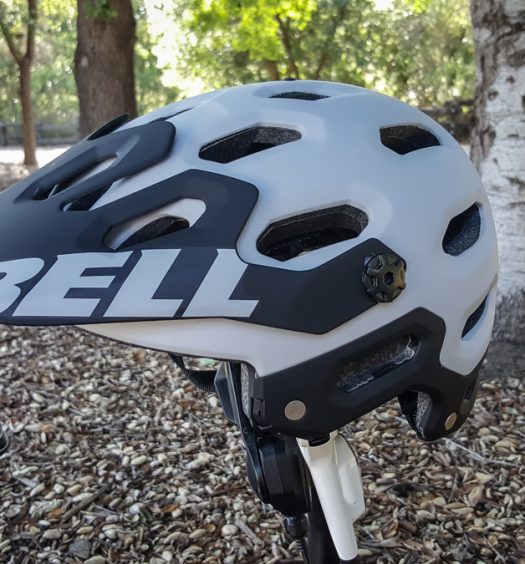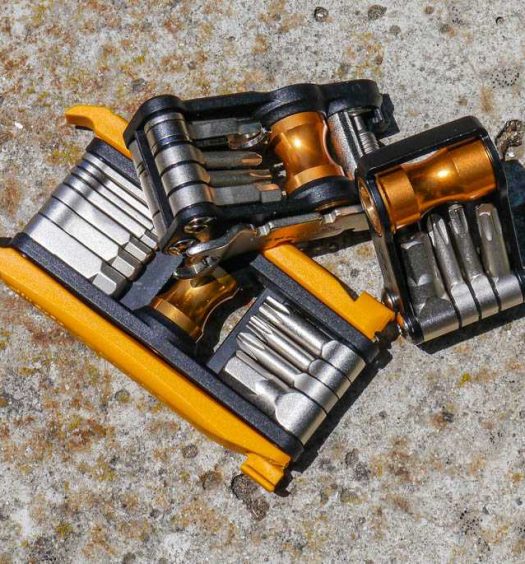People find a lot of different things to do during the Covid-19 shelter in place. Some paint the house. Others clean. We chose to make a few choice upgrades to our trusty mountain bike.
We’d been trying to find time to swap the old 3×9 transmission on our Marin to a 1×9. But we could never get enough time on the calendar. Now seemed like the perfect opportunity. The more modern weight-saving approach beckoned. While we were at it, we decided to treat ourselves to a reasonably priced dropper because, well, who doesn’t need a dropper?
We had a few failures in the process. Front chain rings that caused massive chain suck. Frayed cables. Some less than satisfactory cable routing solutions. But overall, we came out on the other side of these projects with a much more modern and fun ride.
Our gear selection came from a range of retailers including Amazon, REI and our local bike shop.
Front Chainring
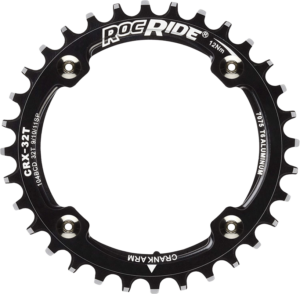
Unfortunately, chainring replacement was one of the first big fails in our update process. We chose to order a couple of options from Amazon including 30 tooth and 32 tooth narrow wide chainrings in the requisite 104 BCD size. For 32T, there’s plenty of options as this is a popular route for most 1x setups. Our preference however was the 30T of which there are few.
The plan for this conversion was to keep the cost low. We’d keep the old cassette, derailleur and shifter combo to minimize cash outlay. Same for the crankset and bottom bracket. In keeping with that approach we chose two budget chainrings in the $20 price range. The first was the Fomtor 30T chainring. The second, 32T product was from RocRide.
As the 30T was our preferred setup, we installed the Fomtor initially. This is where going cheap can go off the rails. The Fomtor was a nightmare from the get-go. Chain suck like I’ve never seen before locking up the drivetrain numerous times on the first test ride. After some adjustment and plenty of lube, things improved somewhat but never fully resolved. Further research after the fact proved that I was definitely not the first to experience this Fomtor fail.
Switching to the RocRide was a completely different story. Smooth from the first pedal. No chain suck whatsoever. The narrow wide offering held the chain in place perfectly. Go the RocRide route if you want a hassle free update.
Find the RocRide on Amazon.
Crank Removal Tool
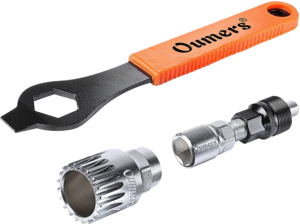
To install the new chainring, the crankset needed to be removed. Or more accurately, the drive side of our square taper crank needed removal. For that we chose the Oumers Bike Crank Extractor. We picked it up at Amazon for about $15.
We went this route because the Oumers Bike Crank Extractor includes three items: the extractor, a bottom bracket remover and a wrench. An extractor alone could cost north of $10 depending on the brand. Initially, we weren’t sure if the bottom bracket would need replacing so having that tool was a bonus (ultimately, our BB didn’t need replacing. At least not yet).
At any rate, the crank extractor performed as needed. After removing the eight millimeter bolt on the exterior of the crank, we threaded the crank extractor onto the crank itself. After hand-tightening it down, we grabbed a large crescent wrench and ratcheted it further against the BB until it came loose. With it off the bike, it was just a matter of removing the old 3x chainrings and replacing with the new 1x from RocRide.
Find the Oumers Bike Crank Extractor on Amazon.
KMC 9x Chain

While we were diagnosing the chain suck caused by our first errant chainring install, we decided to swap to a new chain to see if that would resolve the issue. We consulted our LBS for a solution. They suggested the 9x offering from KMC.
Side note, when starting this project, I didn’t realize that in many areas bike shops are considered essential services. Many remain open through the Coronavirus shutdown (at least partially) so please patronize them when you can.
After consulting my LBS via email, I headed to the shop and — keeping socially distant — purchased the KMC 9x chain. Once home, I was able to size the chain and install it pretty easily using the included Missing Link. This high-quality chain made it easy to determine that my original chainring selection was the source of the chain suck problem.
If your LBS isn’t open, you can also find the KMC 9x chain at Amazon.
PNW Cascade Dropper Post

In addition to the 1x swap, we figured a dropper was in order for our favorite ride. The hills around our East Bay HQ don’t demand it but certainly make it a worthy update. As with the transmission project, we wanted to keep as many ducats in our pocket as possible while still getting a solid product. That’s why we went with PNW.
PNW is one of a growing number of “factory direct” parts providers. They focus on droppers at the moment and have a range of offerings available as aftermarket upgrades. The PNW products use air cartridges, come in either internal or external cable routing configurations and drops of up to 170mm. We chose the least expensive of the bunch, the Cascade and external cable routing and 125mm drop at $129.
After checking the spec on our factory seat post, we ordered the 30.9mm diameter version of the Cascade and some Park Tool PPL-1 PolyLube 1000 Lubricant https://amzn.to/3cfvvzN to use on the new post to keep it from seizing. It fit perfectly on our Marin.
Find the the full PNW line on Amazon.
PNW Puget Lever
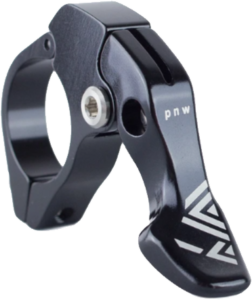
No dropper is complete without a remote lever. And PNW sells several versions separately from the droppers themselves. The’s the Loam Lever, the Adventure Loam Lever and budget-friendly Puget. And just like the rest of this build, we went for the budget option and chose the Puget at $29. REI had them in stock, and with one of their recent sales, I was able to shave a few extra bucks from the price.
Although they didn’t list it in the item description, the Puget comes as a complete kit. So that’s the lever — a nicely machined piece — along with a cable, cable ends, cable housing, a curved metal noodle and other bits.
Installation is pretty simple but not without its intricacies. In particular, there’s a very small barrel nut that requires insertion into the lever just so. That and some associated cable routing issues caused a complete redo on my part. Chalk that up to my amatuer bike mechanic status.
Cables and Cable Management
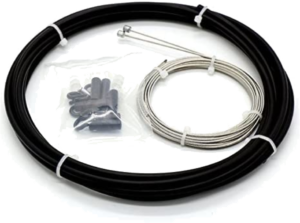
Not knowing that the Puget Lever came with all the fixings, I ordered a set of cables from a company called BlueSunshine, also on Amazon. For less than $10 they provide two high-quality cables, housing, ferrules 8 and cable end caps. I’m glad I had these as I frayed the original cable that came with the Puget and had to completely rework the install.
One of the other challenges that forced the rework was cable routing for the dropper. Since I removed the front shifter and derailleur, I had an unused cable stop and routing channel under the downtube. I sent the cable down that direction, epoxied a housing ferrule at the bottom of the seat tube and passed the cable from there up to the mounting point on the Cascade.
Here’s where I had another small fail. To manage the cable routing, I picked up some adhesive MTB Bike Cable Guides from Xmomx. These looked cool but performed poorly. The clips were too large leaving the cable flapping around instead of firmly mounted. And the adhesive just wasn’t strong enough. At nearly $9 for five, these are very expensive and don’t do nearly as well as a cheap zip tie or even electrical tape.
Cable Cutter

This may have been my biggest budget tool win during this project. Nothing I had in the current tool arsenal could cut bike cable without creating a complete mess. My Linesmen Pliers were the closest but they were still not ideal for the project. So I scoured the internet and came up with the ZFZ Wire Nipper Cutters. At less than one-third the cost of a name brand option, they worked great and made the final pieces of the project puzzle a pleasure to complete.
Other Items

With all the hex head / allen key requirements for this project, I found myself turning to a series of tools from Serfas. You can find my review of those tools here. And you can buy them on Amazon .

